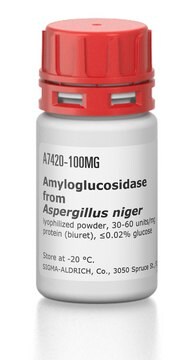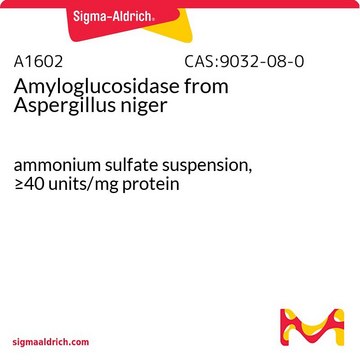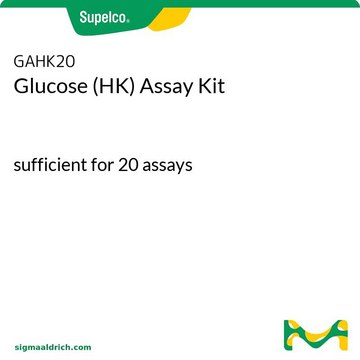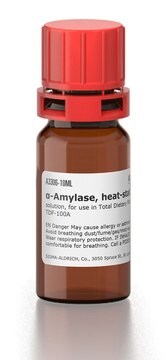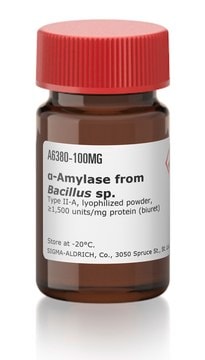ROAMYGL
Roche
Amyloglucosidase
from Aspergillus niger
Synonyme(s) :
Glucoamylase, disaccharidase-type-α-D-glucosidase
About This Item
Produits recommandés
Source biologique
Aspergillus niger
Niveau de qualité
Forme
suspension
Activité spécifique
~14 units/mg protein (At 25 °C with glycogen as the substrate; standardized with BSA.)
Poids mol.
Mr 97 kDa
Conditionnement
pkg of 10 mL (10102857001 [100 mg])
Fabricant/nom de marque
Roche
Paramètres
55 °C optimum reaction temp.
pH optimal
4.6-4.8
Température de stockage
2-8°C
Catégories apparentées
Description générale
Spécificité
Heat inactivation: Heat inactivation is recommended at 80 °C for 45 minutes, followed by rapidly cooling down.
Application
Actions biochimiques/physiologiques
Définition de l'unité
Forme physique
Autres remarques
Code de la classe de stockage
12 - Non Combustible Liquids
Classe de danger pour l'eau (WGK)
WGK 1
Point d'éclair (°F)
does not flash
Point d'éclair (°C)
does not flash
Certificats d'analyse (COA)
Recherchez un Certificats d'analyse (COA) en saisissant le numéro de lot du produit. Les numéros de lot figurent sur l'étiquette du produit après les mots "Lot" ou "Batch".
Déjà en possession de ce produit ?
Retrouvez la documentation relative aux produits que vous avez récemment achetés dans la Bibliothèque de documents.
Les clients ont également consulté
Notre équipe de scientifiques dispose d'une expérience dans tous les secteurs de la recherche, notamment en sciences de la vie, science des matériaux, synthèse chimique, chromatographie, analyse et dans de nombreux autres domaines..
Contacter notre Service technique


